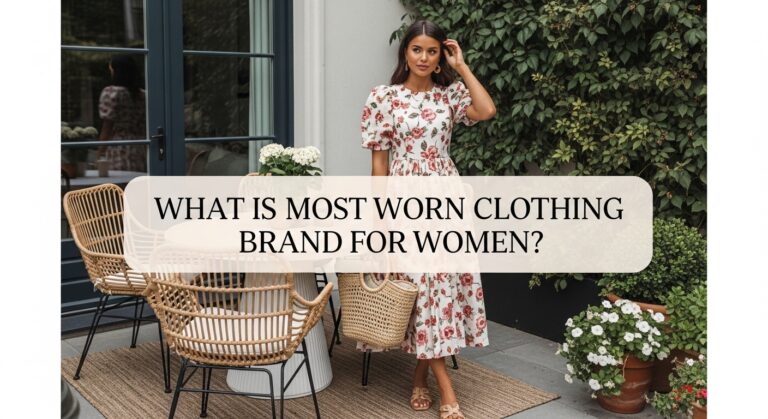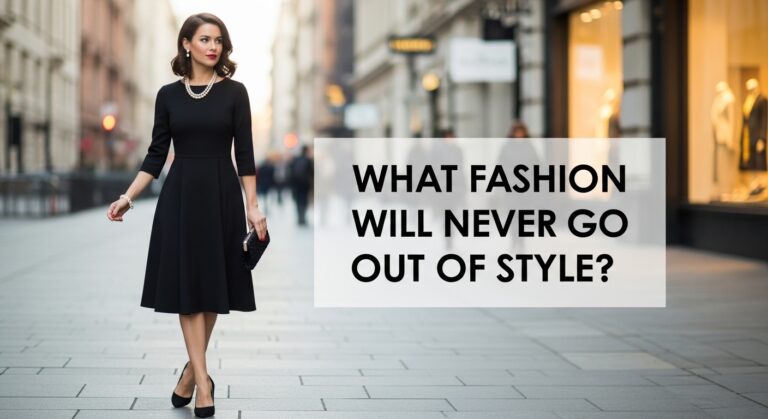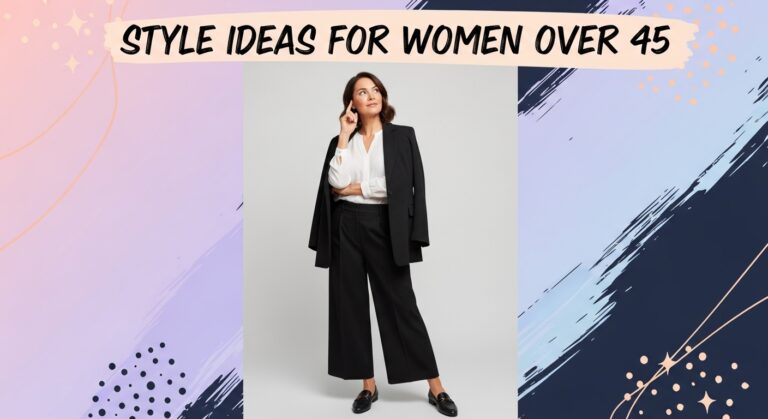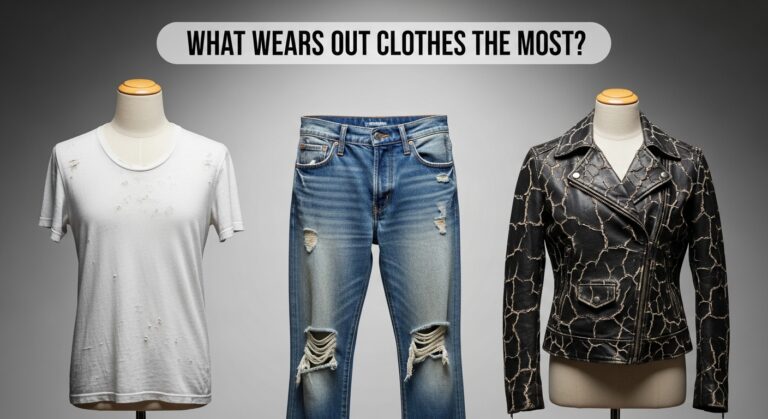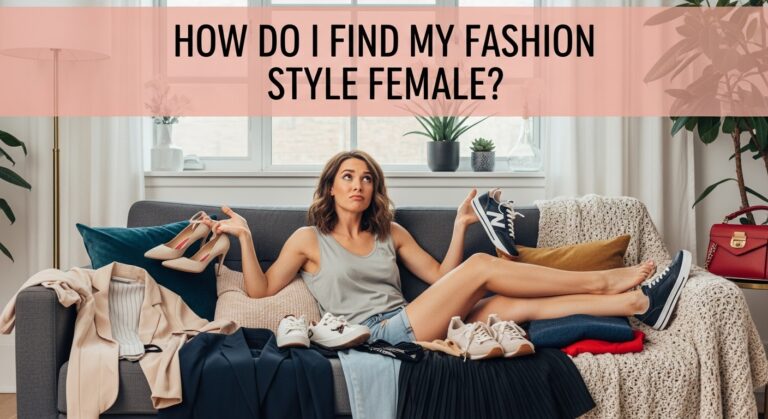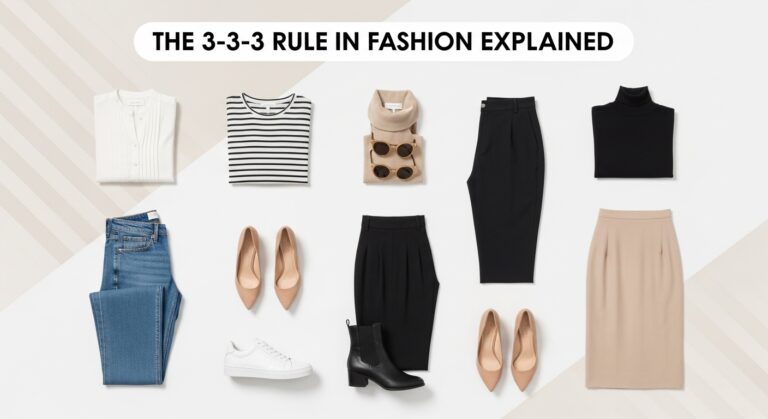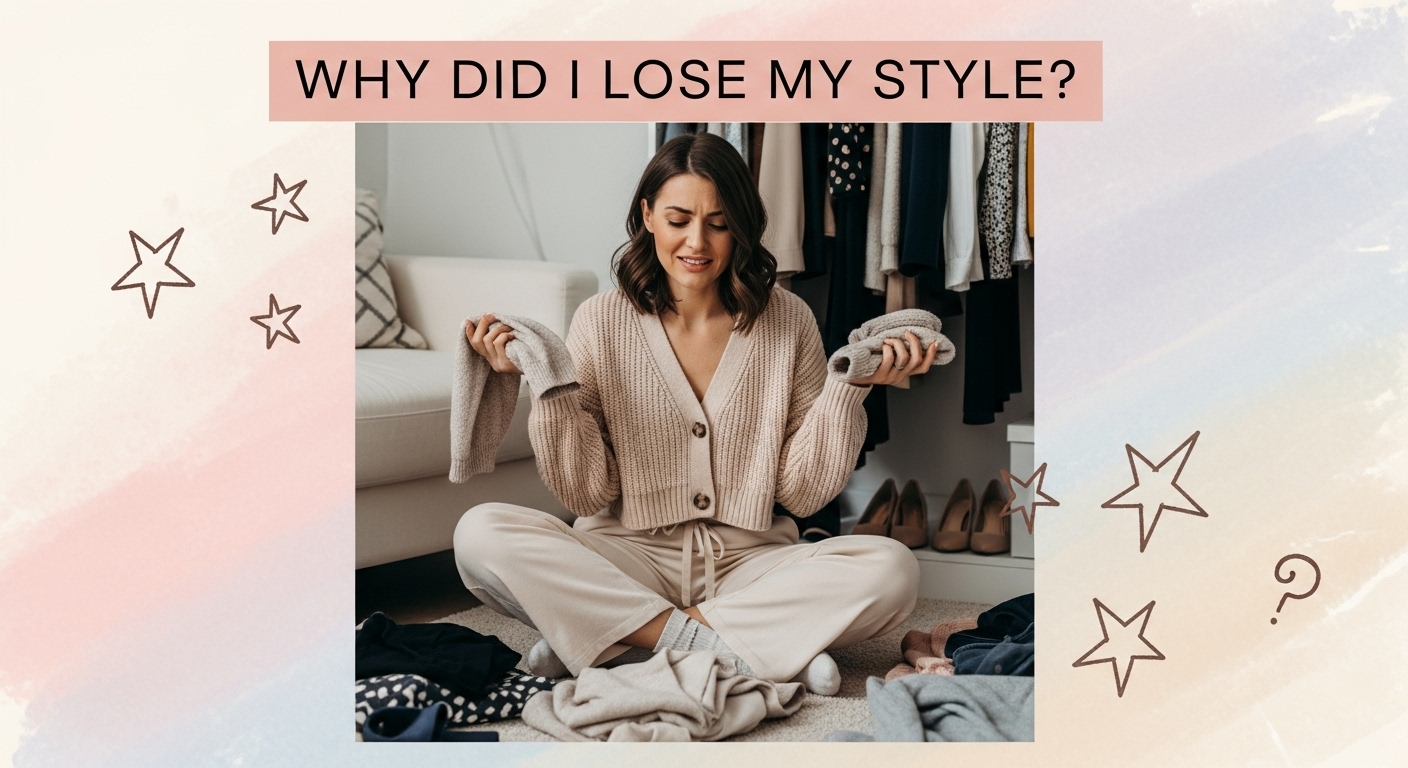
Have you ever looked at your closet and felt like nothing represents you anymore? The outfits that once felt exciting now seem dull, and somehow, your personal style has slipped away without you even noticing. Losing your sense of style isn’t just about clothes—it often reflects deeper changes happening in your life, from shifts in confidence and routine to evolving priorities and self-image.
The short answer is: you probably didn’t really lose your style—it’s just waiting to be rediscovered and redefined for the person you are today. Our style naturally changes as we grow, and what once fit your lifestyle or personality may no longer align with who you’ve become.
This article will uncover the reasons behind feeling disconnected from your style, the subtle psychological factors at play, and practical steps to rebuild a wardrobe that feels authentic, fresh, and completely you.
Why do people suddenly feel like they’ve lost their style?
The feeling of losing your style usually comes from a mismatch between your current self and the clothes you own. As people change jobs, enter new life stages, or go through personal challenges, their style often doesn’t evolve at the same pace. This disconnect creates the sense that nothing feels right to wear.
Psychologists describe clothing as a form of “enclothed cognition”—what you wear affects not just how others see you but how you see yourself. When the clothes in your closet no longer reflect your identity, it feels like your style has disappeared. For example, if you’ve gone through a career shift, motherhood, or a confidence struggle, your old wardrobe may not align with your new reality.
Another common factor is fashion fatigue. Constantly changing trends can make people feel out of touch, leading them to believe they’ve lost their style when, in reality, they’ve simply lost connection to what feels authentic.
Could stress or lifestyle changes be the reason I lost my style?
Yes, lifestyle changes and stress can play a major role in making your style feel lost. When life feels overwhelming, clothing often becomes a low priority. Over time, this leads to falling back on comfort basics, ignoring style, and eventually feeling like you don’t recognize yourself in the mirror.
For example, many women report losing their sense of style after becoming parents, starting demanding jobs, or going through major life shifts such as divorce or relocation. A 2022 survey by Stitch Fix revealed that 70% of women experience style ruts after significant lifestyle changes. These shifts demand practicality, and fashion often takes a backseat.
Stress also affects creativity. Since style is a form of self-expression, feeling mentally drained can dull the desire to experiment with outfits. What once felt enjoyable now feels exhausting, so people stick to the simplest options.
Does age have anything to do with losing personal style?
Age plays a role in style changes, but it’s less about numbers and more about evolving identity. As people enter their 30s, 40s, and beyond, their clothing needs and body confidence naturally shift. This can create a gap between how they used to dress and how they feel comfortable dressing now.
For example, someone who loved bold mini-dresses in their 20s may no longer feel at ease in them at 40. That doesn’t mean style is lost—it means it’s evolving into something new. Research from the American Psychological Association highlights how self-image changes with age, and style is a reflection of that transformation.
Losing style at different ages often comes from holding onto past versions of yourself. When your wardrobe doesn’t adapt, it feels like your sense of style has slipped away, when in reality, it just needs refreshing.
Am I just out of touch with fashion trends?
Feeling out of touch with fashion is common, but it doesn’t mean your style is gone. Trends move so quickly that chasing them often creates frustration instead of confidence. If your wardrobe feels outdated, it’s usually because it no longer aligns with your current lifestyle—not because you aren’t trendy enough.
In fact, research in fashion psychology suggests that people who focus less on following trends and more on personal expression report higher satisfaction with their style. Your unique style isn’t about copying magazines or social media—it’s about blending pieces that reflect your personality with clothing that makes you feel comfortable and confident.
So instead of asking, “Am I trendy?” ask, “Does this outfit feel like me right now?” That shift in perspective often reignites confidence.
Could body image struggles make me feel like I lost my style?
Yes, body image challenges are one of the biggest reasons people feel disconnected from their style. If your body has changed due to weight fluctuations, pregnancy, or health factors, clothes you once loved may not fit the same way. That mismatch often creates frustration, leading you to believe your style has disappeared.
Studies from the National Eating Disorders Association show that over 70% of women report wardrobe dissatisfaction when struggling with body image. The issue isn’t the style itself—it’s the discomfort with how clothes feel on the body at that moment.
This is why many people find themselves stuck wearing oversized basics or repeating a few “safe” outfits. While this provides comfort, it also makes style feel flat. Rebuilding confidence starts with accepting current body changes and finding clothing that celebrates your shape today, not years ago.
Is losing my style a sign of low confidence?
Low confidence and lost style are often closely connected. When confidence dips, people stop experimenting with clothing, avoid bold choices, and settle for neutral or oversized outfits that don’t stand out. Over time, this reinforces the idea that they’ve lost their style.
Fashion psychologists argue that style is deeply tied to self-expression. When confidence is strong, style feels effortless. But when self-doubt creeps in, style feels foreign. A 2021 study from Psychology of Fashion highlighted how clothing choices can directly reflect mental health—those experiencing low self-esteem often reported dressing in ways that concealed rather than expressed.
The good news is confidence and style can rebuild each other. Wearing an outfit that feels slightly bold or new often sparks a psychological boost, which slowly rebuilds self-belief.
How can I start finding my style again?
Rediscovering your style begins with reconnecting to yourself, not fashion magazines. Instead of asking what’s trendy, ask what makes you feel like the best version of yourself. Start by auditing your closet—notice what you actually wear versus what sits untouched.
Try these steps:
- Identify 3–4 outfits in which you feel genuinely good. Ask yourself why they work—comfort, color, fit, or mood.
- Create a Pinterest board or folder of outfits that inspire you. Notice repeating themes like neutral palettes, boho vibes, or structured tailoring.
- Invest in versatile basics that fit your lifestyle today. Having a strong foundation makes experimenting easier.
- Introduce one or two “bold” pieces to reignite excitement, whether it’s a statement jacket, colorful scarf, or patterned shoes.
- Give yourself permission to evolve. Your new style doesn’t have to resemble your old one—it should reflect your current self.
This process takes time but gradually brings clarity. Many people rediscover their style within a few months once they actively reconnect with it.
Is it normal to go through multiple style “phases”?
Absolutely. Style is not fixed—it evolves with your identity, experiences, and environment. Expecting one permanent style is unrealistic because people naturally change over time. Just like music taste or hobbies, fashion is fluid.
Looking back, you may notice you’ve already gone through different style phases: maybe edgy in your teens, minimalist in your 20s, practical in your 30s, and refined later. Each phase served who you were at that time. Losing your style often just means you’re entering a new phase that hasn’t fully taken shape yet.
Instead of fearing the change, embrace it as part of growth. Fashion history itself reflects this truth—styles shift every decade, and personal wardrobes mirror the same rhythm.
How can I balance comfort and style without feeling boring?
The key is choosing comfort pieces with intentional design. Style doesn’t mean discomfort—it means wearing clothes that both feel good and look like you thought about them. For instance, a soft knit dress with boots feels just as easy as leggings but instantly looks more put together.
One trick is focusing on fabric and fit. Choosing breathable, well-tailored items makes even basic outfits look stylish. Accessories also elevate comfort wear—adding a belt, necklace, or structured bag can turn a simple look into something polished.
Retail research shows that women who invest in “elevated basics”—high-quality jeans, knitwear, and sneakers—report feeling stylish without sacrificing comfort. It’s less about adding dozens of trendy items and more about refining everyday staples.
Why do I feel guilty about spending money on style?
Guilt around style spending often stems from prioritizing practicality over self-expression. Many people feel clothing is “frivolous” compared to other expenses, so they neglect it. Over time, this creates a wardrobe that doesn’t feel inspiring, leading to the sense of lost style.
But clothing is not just fabric—it influences confidence, mood, and presence. A Harvard Business Review study highlighted that people who dressed in a way that aligned with their identity performed better in professional and personal settings. Style is an investment in self-image, not just material.
If guilt holds you back, try setting a budget specifically for wardrobe updates. Even small investments—like one high-quality blazer or pair of shoes—can make a big difference in restoring style confidence.
Can social media affect how I view my style?
Yes, social media often distorts how people see their own style. Constant exposure to influencers and fast-fashion hauls creates unrealistic comparisons. You may feel like your wardrobe doesn’t measure up, even if it suits you perfectly.
Research by the Fashion Psychology Institute shows that over 60% of women feel pressure to change their style after comparing themselves on Instagram or TikTok. This often leads to buying trend-driven pieces that don’t fit their lifestyle, worsening the feeling of style loss.
The best approach is curating your feed. Follow creators whose styles align with your authentic taste, not just trends. Use social media as inspiration, not as a measure of worth.
What’s the first step to feeling stylish again tomorrow?
The quickest step is choosing one outfit that feels slightly elevated compared to your daily default. Instead of your usual jeans and T-shirt, try jeans with a blouse and blazer. Instead of sneakers, try ankle boots. That small upgrade instantly changes how you see yourself.
Style returns in layers, not all at once. Each intentional choice rebuilds confidence and sparks ideas. Tomorrow could simply be about wearing a color you love but rarely pick. These small shifts add up and gradually reignite your sense of style.
Finding your style again is about reconnecting with who you are now
Losing your style isn’t permanent. It’s often a sign that you’ve grown, changed, or shifted priorities, and your wardrobe just hasn’t caught up yet. Whether it’s lifestyle changes, stress, body image, or confidence, style loss is really a call to pause and reconnect with yourself.
When you start listening to what feels authentic today—not five years ago, not what Instagram says—your style naturally resurfaces. And often, it comes back stronger, more defined, and more reflective of who you are now.

